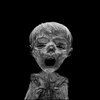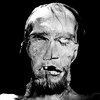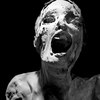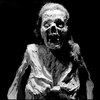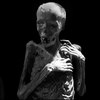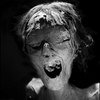Steve Pyke: Los Muertos
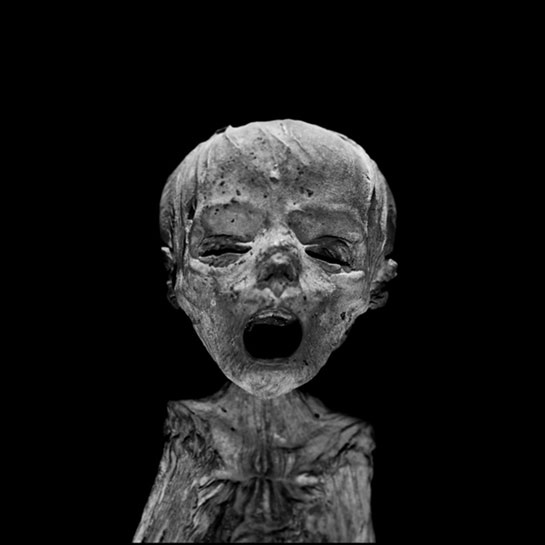
“I had heard about the mummies of Guanajuato in Mexico, mummified cholera victims from the 1830’s.” writes Steve Pyke. “The reason for the condition of the corpses was said to be minerals found in the soil locally. The bodies were of men, women and young children, including one stillborn foetus. I had seen photographs but wasn’t prepared for the initial encounter… Walking into the small dark museum I saw rows of glass specimen cases containing atrophied yet completely mummified figures. Some were arched over as if in death throes, whilst others seemed at peace and holding books. Others I saw were standing as if soldiers on sentry duty. There was the faint, musty smell of mothballs in the room. It felt like a church in there, but with a frozen congregation. I felt a hushed reverence to these figures. I’m sure they would have been recognisable if I had been able to see photographs of what they looked like when alive, but when these people died photography was only just being invented.” (more)
“The practicalites of the photography which were difficult, took over for a while as i only had an hour or so to work in. I was not allowed to use lights and had to rely on the museums spotlights which were harsh making the mummies look even more ghoulish. To create fill in we used the light from our cellphone screens. Having no connection to speak and interact with these figures I started to feel like I was photographing still lives, which in some ways I was except of course these people had once lived. I found myself staring into their faces and wondering about the lives they had once lived and somehow recognising people from my past in them. Holding the gaze of a dead subject instead of giving it a sidelong glance seemed to make the making of the portraits easier, almost as if there had been an exchange.
“Ultimately I believe photography has to deal with our own mortality. As soon as we press the shutter, the image becomes a part of our past. When you make a photograph, whether it is a portrait or a still life, the end result becomes a symbol of what you saw, it is no longer the object you had attempted to represent. It has become a means created to extend our ways of seeing in our search for ‘truth’.”
I asked Steve some questions about these photographs:
Jörg Colberg: How did you first hear of the Mummies of Guanajuato?
Steve Pyke: I was in conversation with a friend in Mexico City some years back and was told about them. I contacted the museum, but it was very difficult to get access to photograph. When I met the President to photograph him strangely access became a lot easier.
JC: And what made you want to photograph them? What is their fascination for you as a photographer?
SP: I had photographed relics and mummified bodies in Spain, Italy and Portugal over the years. There is always something that fascinates me about the human form. In death it is particularly interesting. The physical body remains behind for a short time, but all sense of the character of that person has left. Death is something that comes to all of us, but it’s rare to witness the human form like this. These figures are almost 200 years old and yet still have remarkable distinctive facial features. Photography had barely been invented when they passed away, and yet if they had been photographed I’m sure they would still be recognisable
JC: Conditions were tricky in the museum - how did you arrive at the photographs you wanted, despite what I must imagine the surreality of the situation?
SP: The practicalites of the photography which were difficult, took over for a while as I only had an hour or so to work in. I was not allowed to use lights and had to rely on the museums spotlights which were harsh, making the mummies look even more ghoulish. To create fill in we used the light from our cellphone screens. Having no connection to speak and interact with these figures I started to feel like I was photographing still lives, which in some ways I was - except of course these people had once lived. I found myself staring into their faces and wondering about the lives they had once lived and somehow recognising people from my past in them. Holding the gaze of a dead subject instead of giving it a sidelong glance seemed to make the making of the portraits easier, almost as if there had been an exchange.
Los Muertos is going to be on view at Artjail in New York City, 23 September - 3 November, 2011
(Photographs kindly provided by - and (c) Copyright - Steve Pyke)
 By
By 